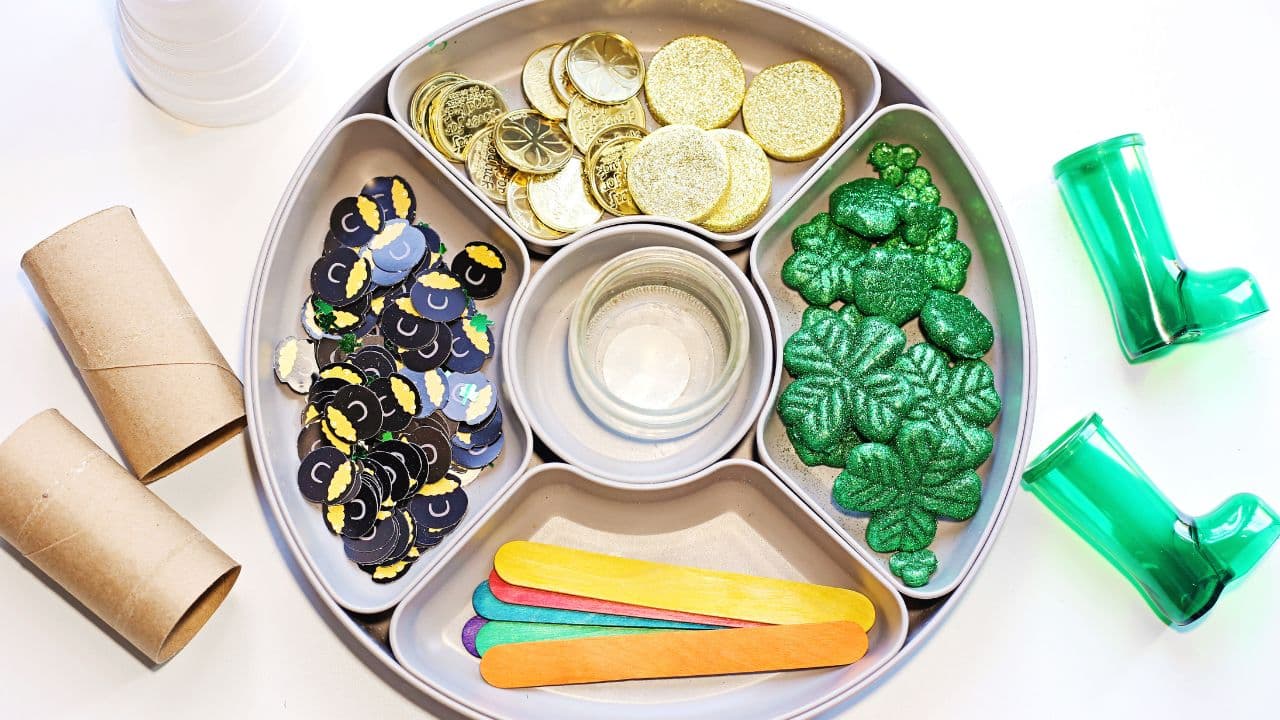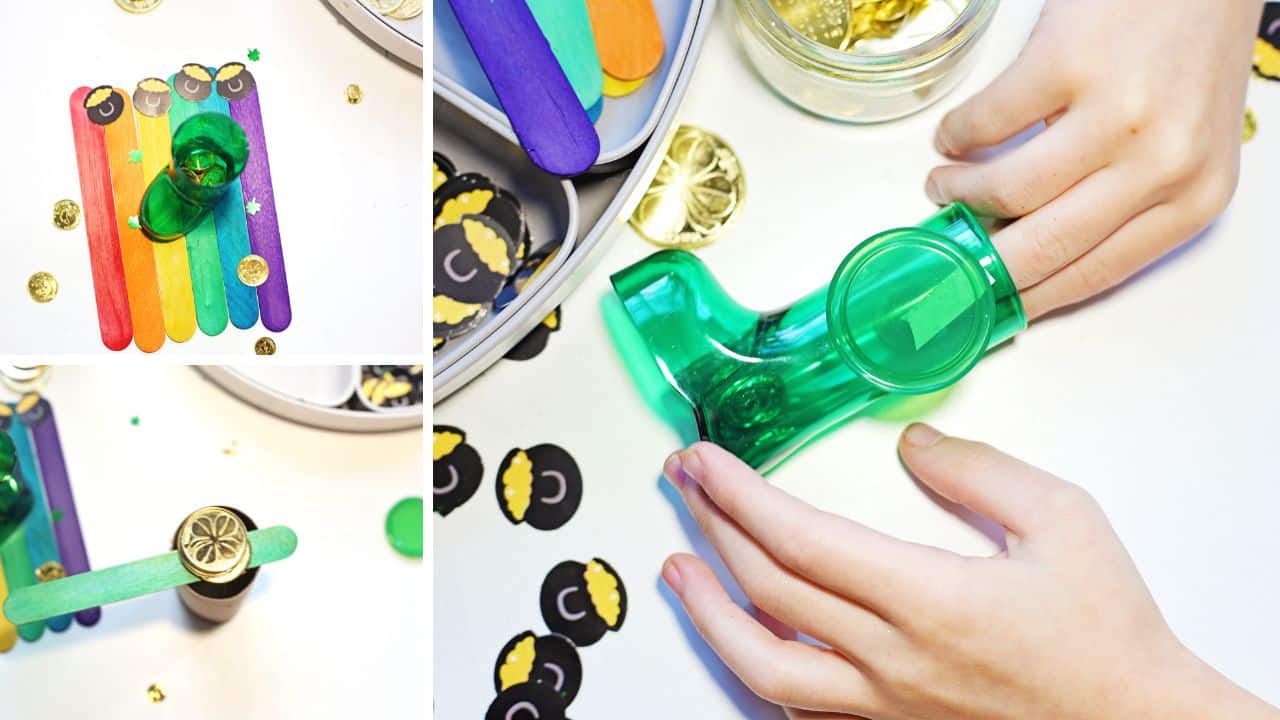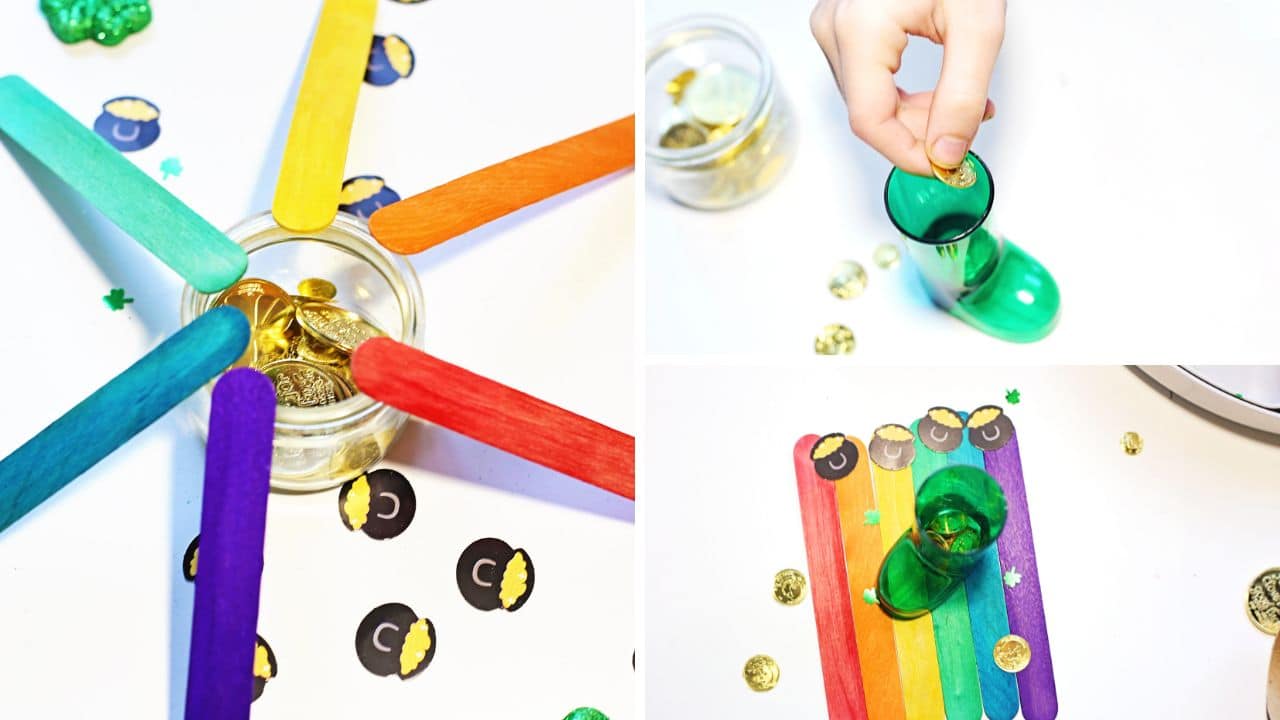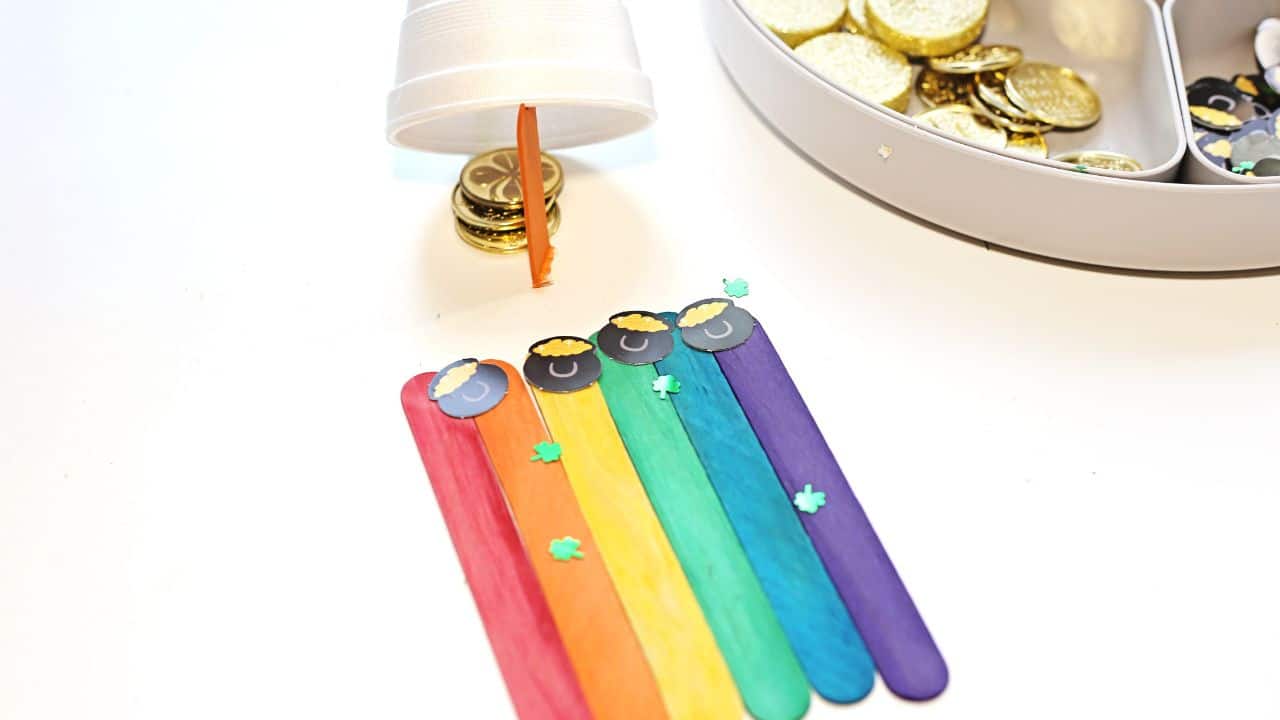I’m always looking for hands-on ways to make holidays fun without filling the house with more clutter. So when March rolls around, we skip the plastic party favors and build a Leprechaun Trap Sensory Tray instead. It’s messy in the best way, full of creativity, and gives us the chance to build, imagine, and problem-solve—together.
What I love most is watching my child light up with ideas, figuring out how to catch the leprechaun, where to hide the gold, or what to build with a toilet paper roll and a popsicle stick. It’s simple, silly fun with real developmental value packed in. And it keeps little hands busy with something way more engaging than another screen.
Supplies and Materials

You can find most of these at Dollar Tree or in your craft bin:
- Gold coins (plastic or foam)
- St. Patrick’s Day confetti (shamrocks, pots of gold, rainbows)
- Shamrocks (foam or felt)
- Colored jumbo popsicle sticks
- Styrofoam cups
- Toilet paper rolls
- Small plastic boots or mini leprechaun figurines (optional)
Note: You can also add a glass jar, string, cotton balls, or other open-ended materials for extra fun.
Instructions & Play Suggestions

- Set the Stage: Arrange the materials on a tray or in a shallow bin so everything is visible and ready to explore. No base filler is needed—just the loose parts for creative building.
- Build Your Trap: Invite kids to create their own leprechaun traps using the supplies. Will they make a tunnel? A slide into a cup? A rainbow ramp leading to the gold?
- Encourage Sensory Language: As they build, prompt kids to describe the way the items feel—rough, bumpy, smooth, cold—and how they look. Ask how each item is different or similar. For example: How is the foam shamrock different from the confetti one?
- Promote Critical Thinking: Ask open-ended questions to support problem solving:
- How would a leprechaun find the gold?
- What would make him fall into the trap?
- Can he escape? How would you stop him?
- Use Each Base Differently: Challenge them to make one trap using a styrofoam cup, another with a toilet paper roll, and maybe a third using popsicle sticks. Each new base creates a fresh opportunity for creativity.
- Troubleshoot Together: Maybe the gold is too hidden. Maybe the trap falls over. That’s the magic—kids learn to adjust, rebuild, and think through their designs in real time.
Benefits of the Leprechaun Trap Sensory Tray

- Critical Thinking & Problem Solving: Kids must think through design challenges, test ideas, and adapt as they go—all while having fun.
- Fine Motor Skill Development: Picking up coins, stacking cups, and balancing sticks builds those small hand muscles that support handwriting and coordination.
- Creativity & Imagination: There’s no right or wrong way to build a trap, which gives kids the freedom to invent, explore, and try new ideas.
- Language Development: Talking through their process helps build vocabulary, sentence structure, and descriptive language.
- Confidence Building: There’s something empowering about creating a little world from random supplies—especially when they proudly show it off or explain how it works.
Fun Facts & Conversation Starters

Want to sneak in a little learning while the kids are building their traps? These fun facts and open-ended questions are perfect for sparking conversation and curiosity during play:
Fun Facts About Leprechauns & St. Patrick’s Day
- Leprechauns come from Irish folklore and are said to be tiny, mischievous shoemakers who hide pots of gold at the end of rainbows.
- According to legend, if you catch a leprechaun, he must grant you three wishes in exchange for his freedom.
- St. Patrick’s Day celebrates Saint Patrick, the patron saint of Ireland, and is observed on March 17th.
- The shamrock was used by Saint Patrick to explain the concept of the Holy Trinity.
- Green wasn’t always the color of St. Patrick’s Day—blue was actually used first!
Conversation Starters
- If you caught a leprechaun, what would your three wishes be?
- Where do you think leprechauns hide when they’re not guarding gold?
- Do you think your trap would work? Why or why not?
- What would you do if you found a real pot of gold?
- If you were a leprechaun, where would you hide your treasure?
Frequently Asked Questions
What age is this best for?
Ages 3 and up! Preschoolers will love the building aspect, while older kids can dive deeper into the problem-solving. Always supervise younger kids with small pieces like confetti or coins.
Do I need a filler for this sensory tray?
Nope! The open-ended pieces are the stars here. But if you want to add a green rice or shredded paper base for visual interest, go for it.
Can I use recycled materials?
Absolutely. Cardboard, string, cereal boxes, scrap paper—anything that inspires creativity can become part of the trap.
What if my kid doesn’t want to build a trap?
That’s okay! Some kids may just want to sort the materials, create scenes, or play with the pieces their own way. Follow their lead—it’s all learning.
How do I extend the play?
Pair it with a St. Patrick’s Day storybook, a scavenger hunt for gold, or have your child draw a picture of their trap and explain how it works.
This sensory tray is all about making memories and letting your child take the lead. It’s creative, engaging, and a little chaotic in the best possible way—and that’s what makes it feel special.

Leave a Reply